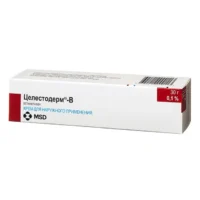Description
Pantestin Gel (Dexpanthenol, Myramistin) 15g
Ingredients
- Active ingredients: Dexpanthenol, Myramistin
Dosage
- Recommended dosage: Apply a thin layer of the gel to the affected area 2-4 times a day.
Indications
- Indicated for: Pantestin Gel is used for the treatment of minor skin irritations, cuts, and burns.
Contraindications
- Do not use if: Allergic to any of the ingredients.
Directions
- Directions for use: Clean the affected area before applying the gel. Avoid contact with eyes and mucous membranes.
Scientific Evidence
- Pantestin Gel: Studies have shown that dexpanthenol, a key component, promotes wound healing and reduces inflammation. Myramistin, another active ingredient, exhibits strong antimicrobial activity against various pathogens, aiding in infection prevention for minor skin injuries.
Additional Information
- Before using Pantestin Gel, consult a healthcare professional, especially if you have underlying skin conditions or are pregnant or breastfeeding. Store the gel in a cool, dry place and keep it out of children’s reach.
- Follow the recommended dosage and application instructions for optimal results. Discontinue use and seek medical advice if adverse reactions occur or the condition worsens.





